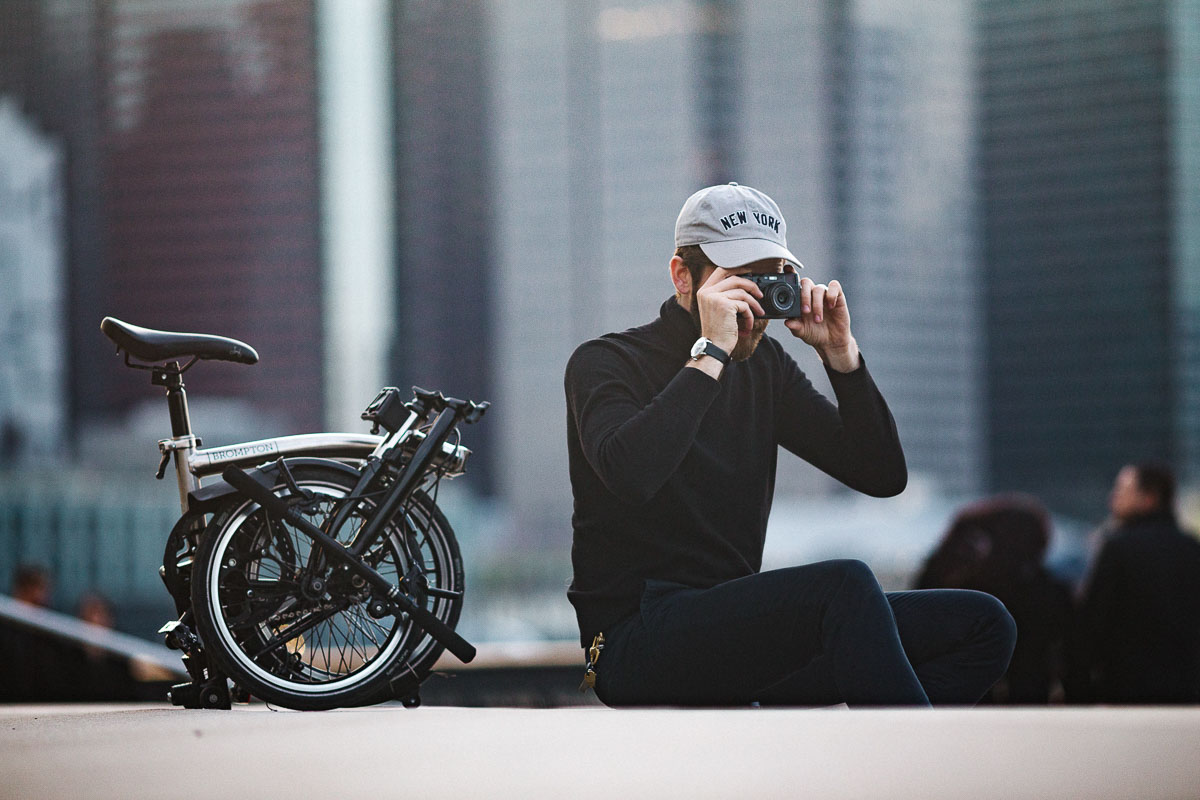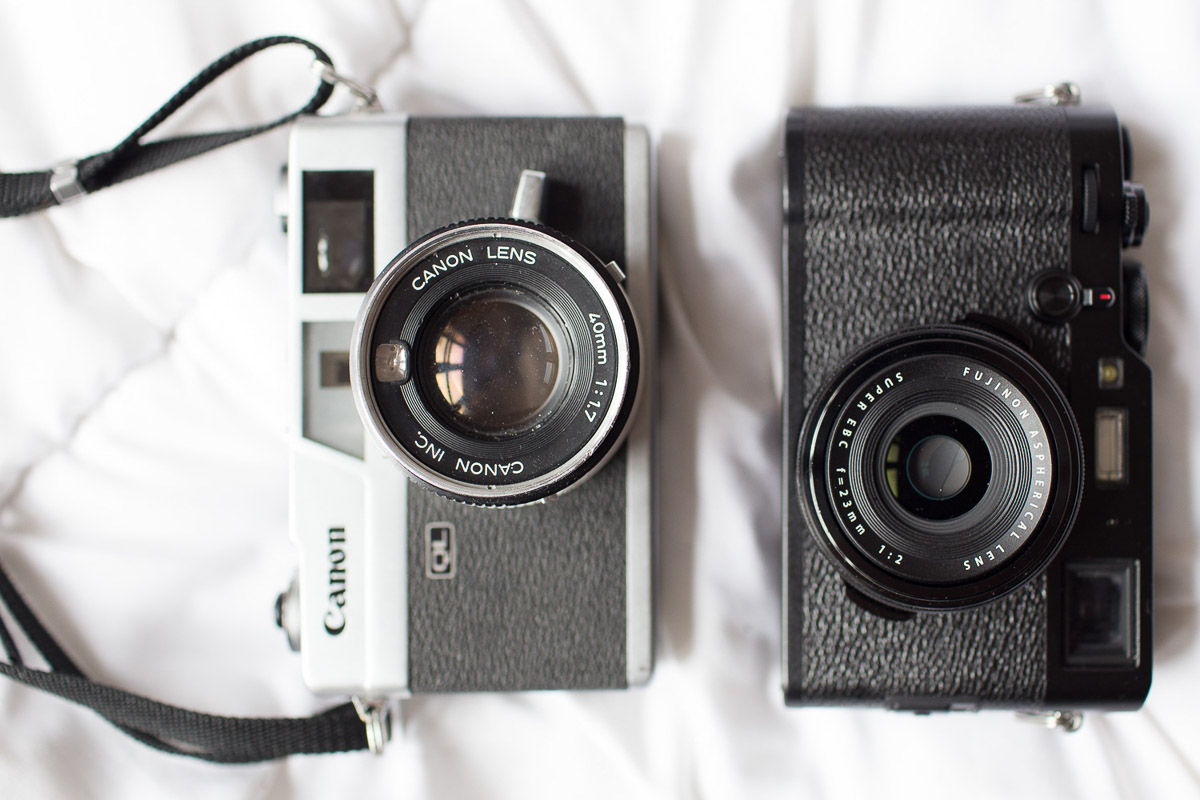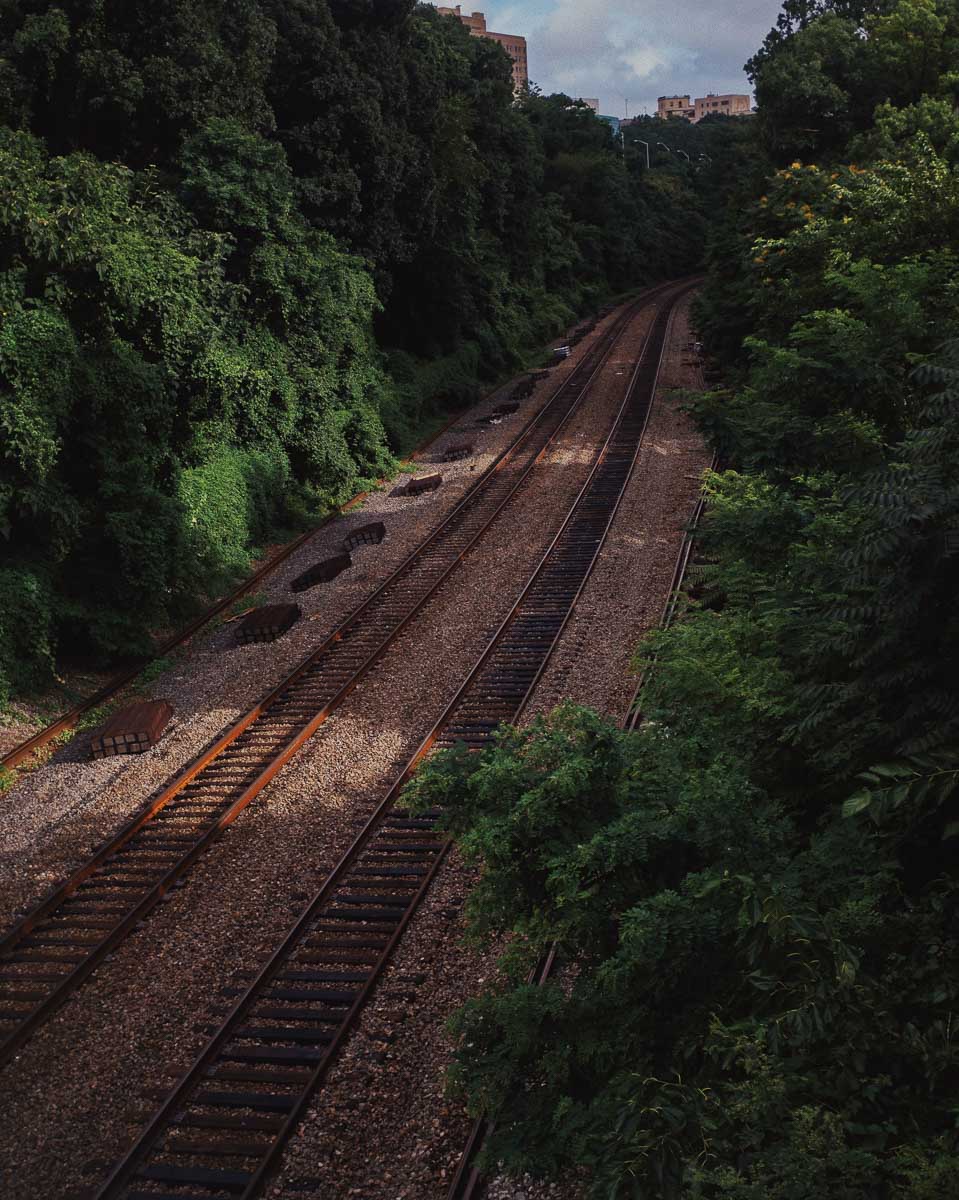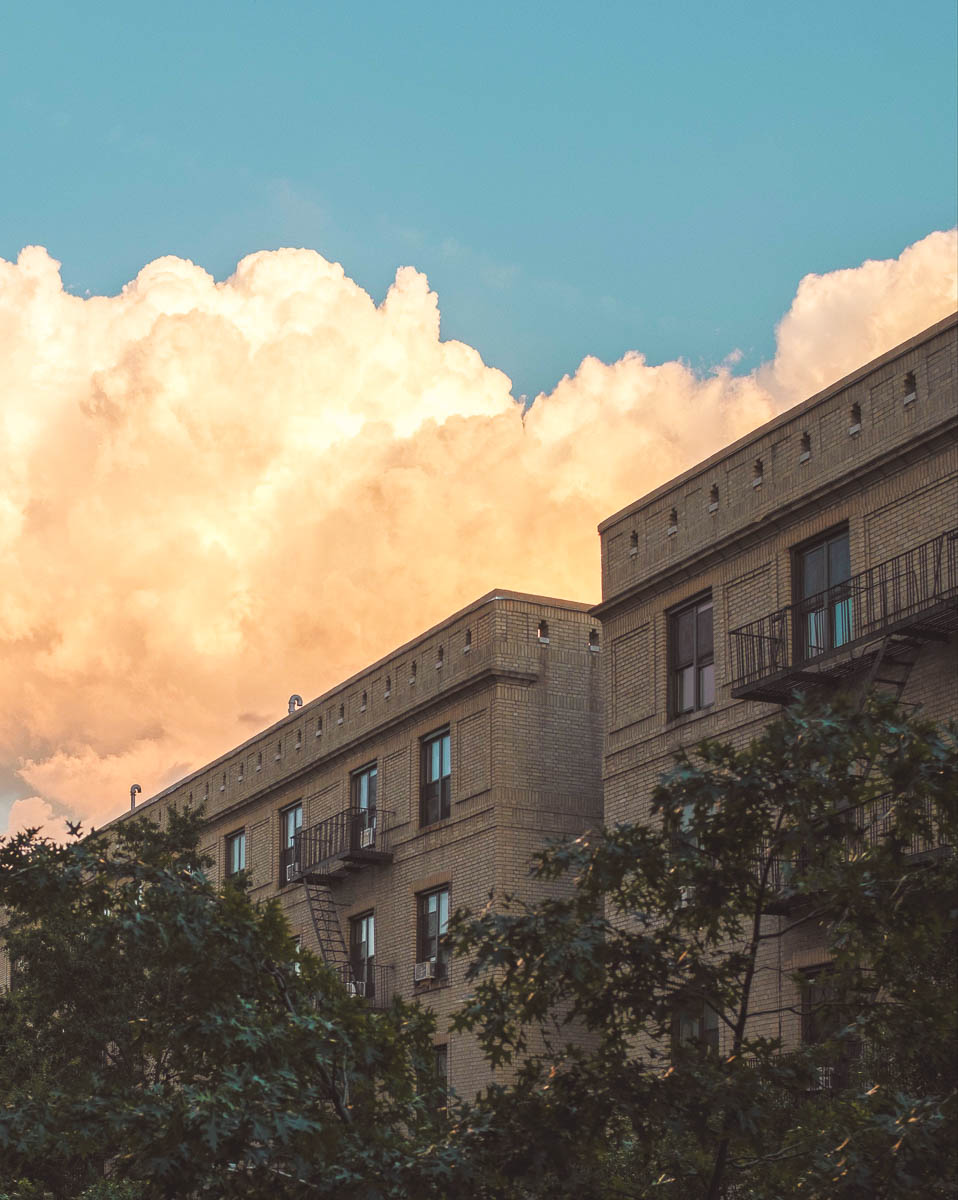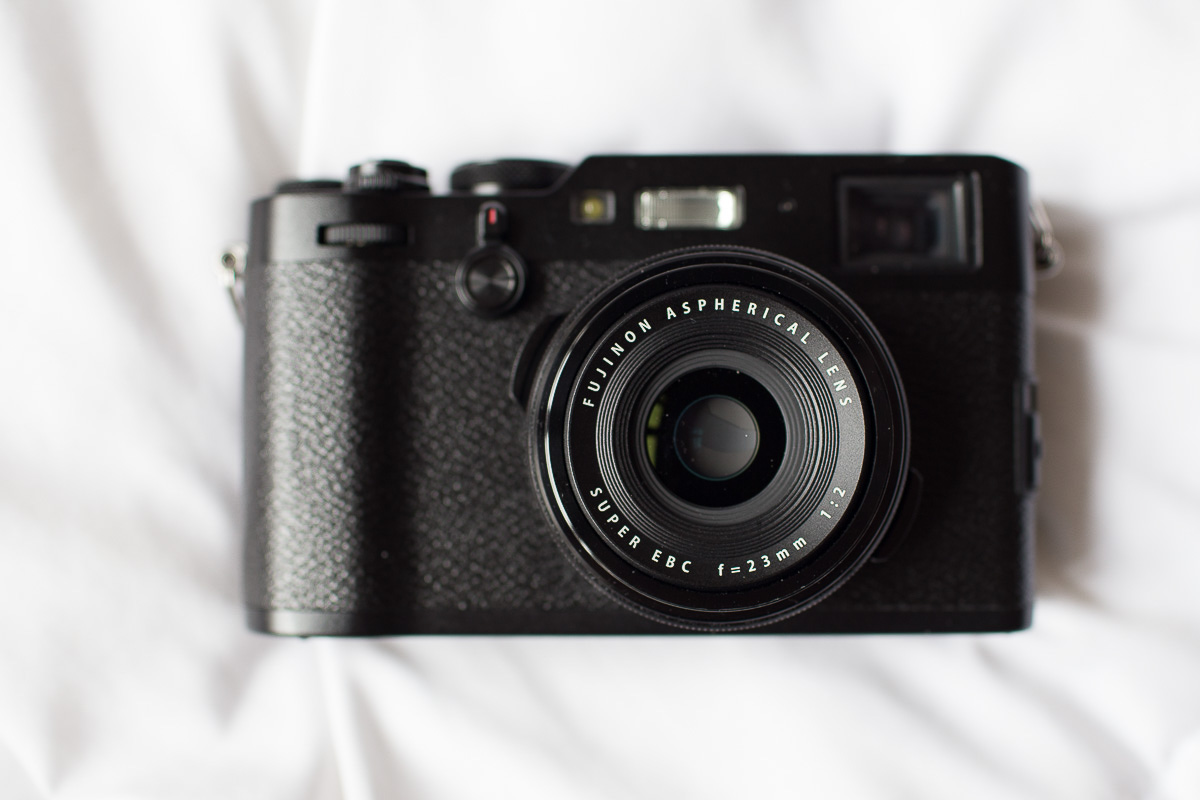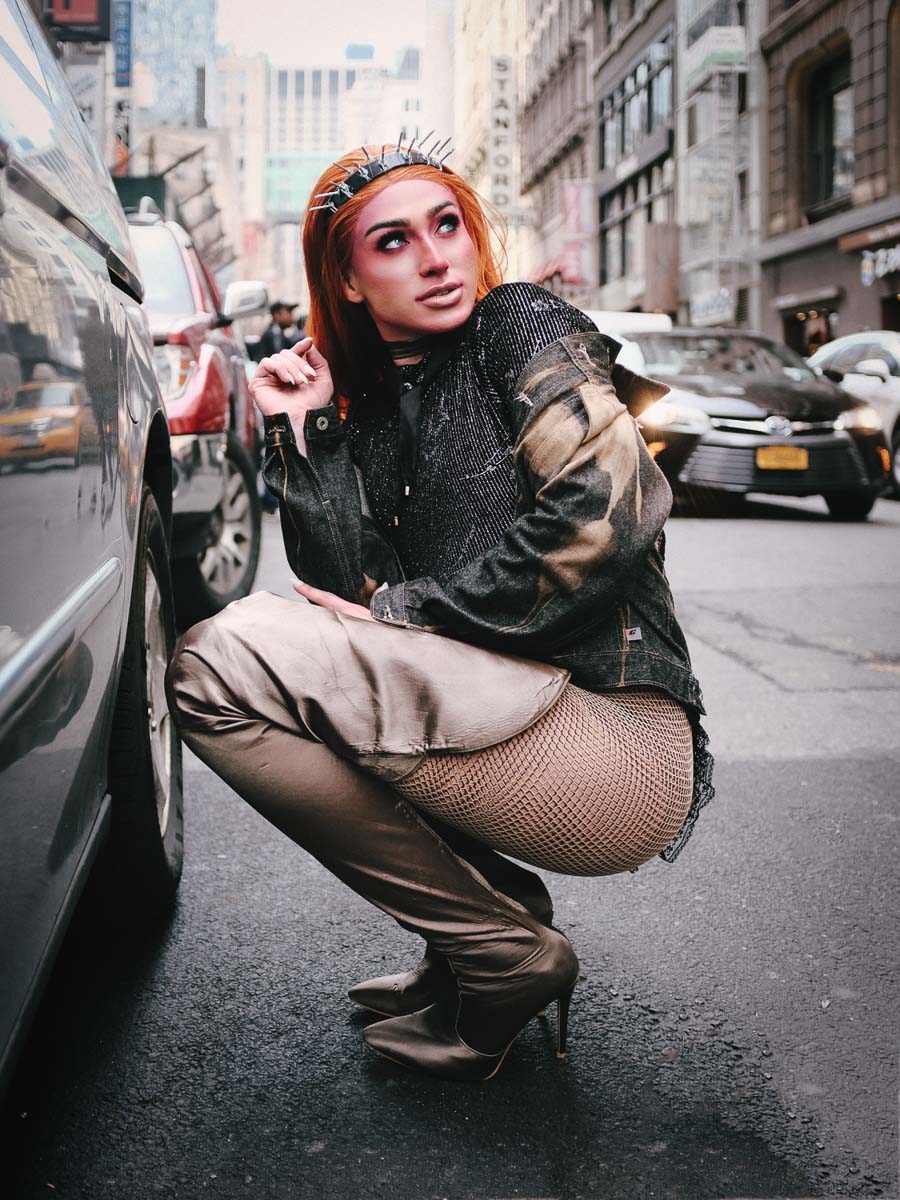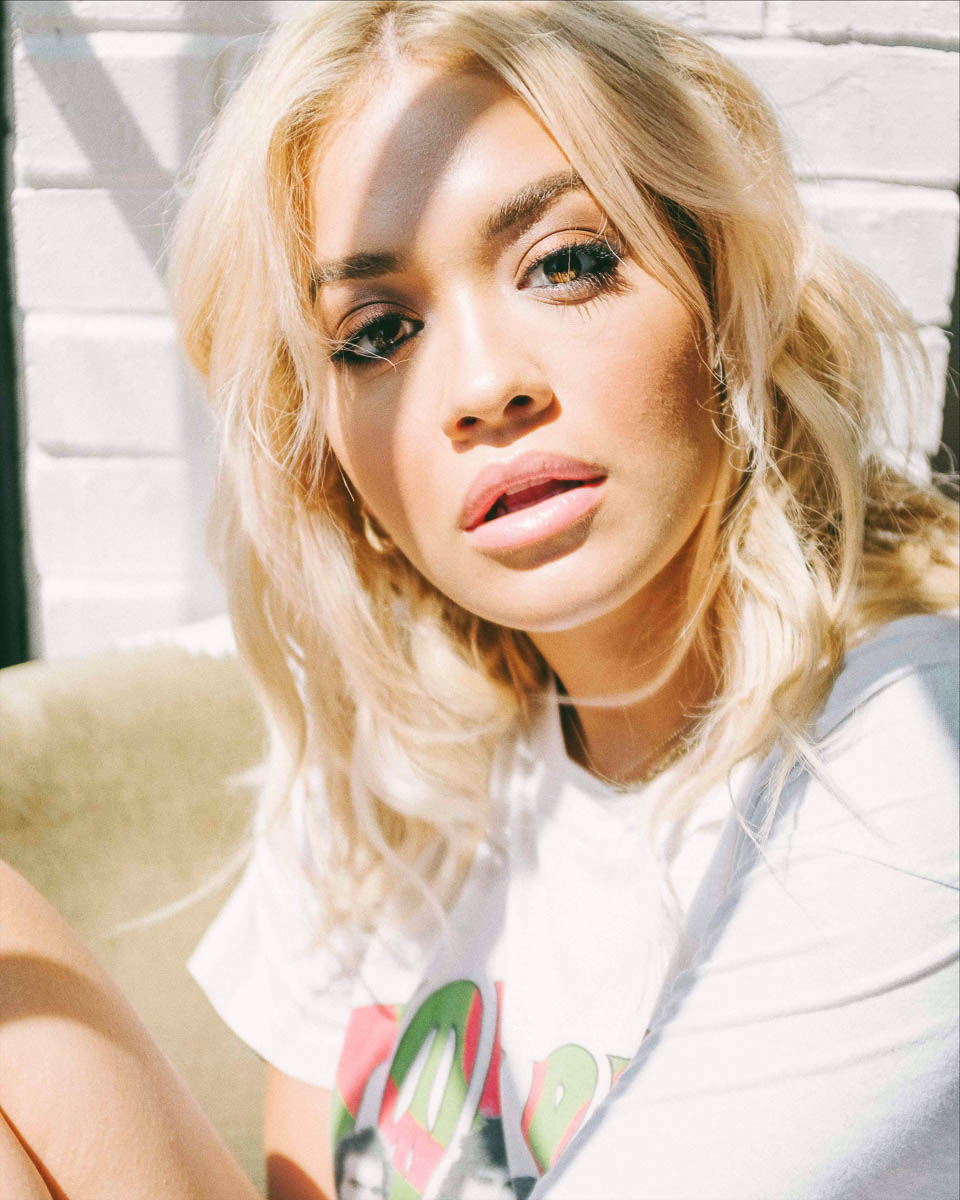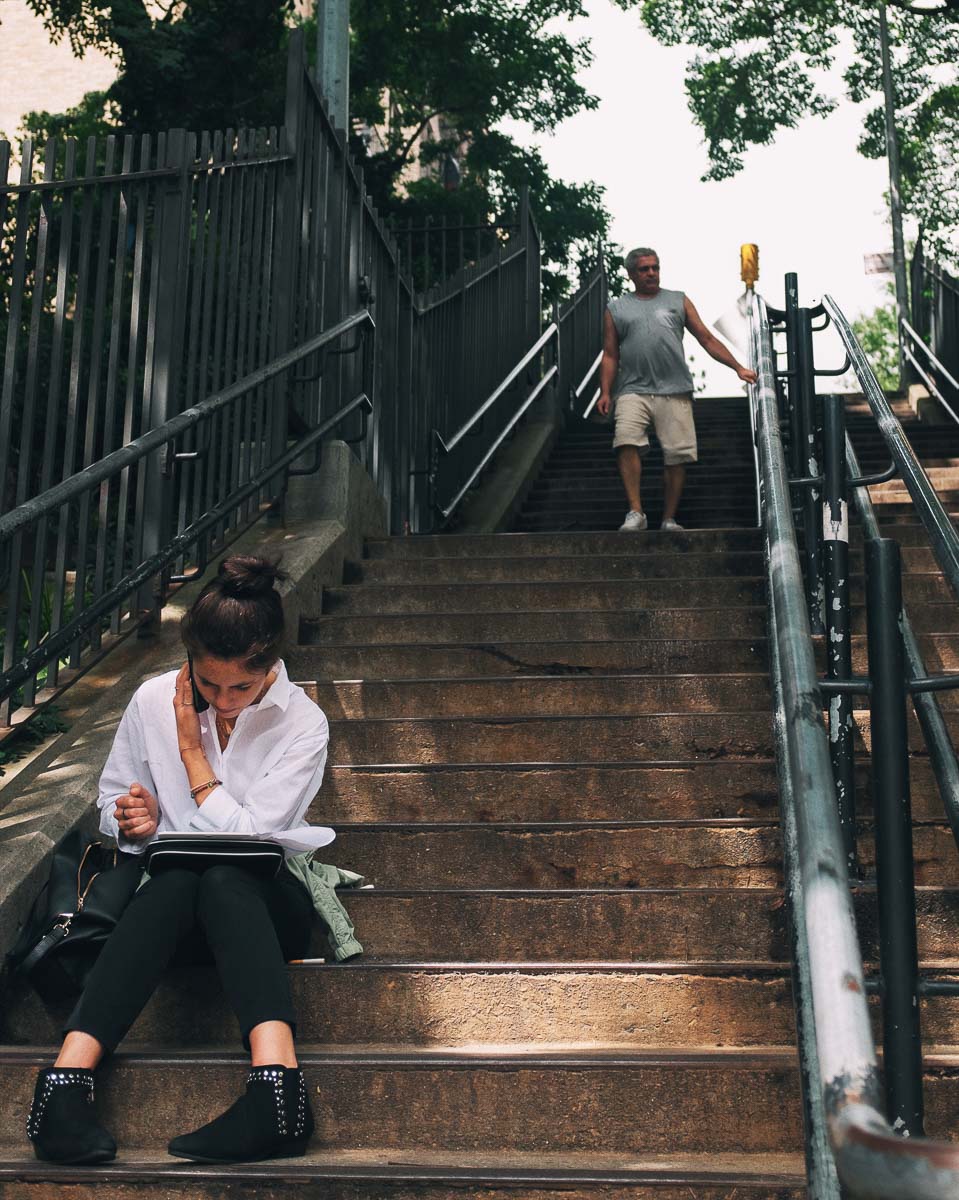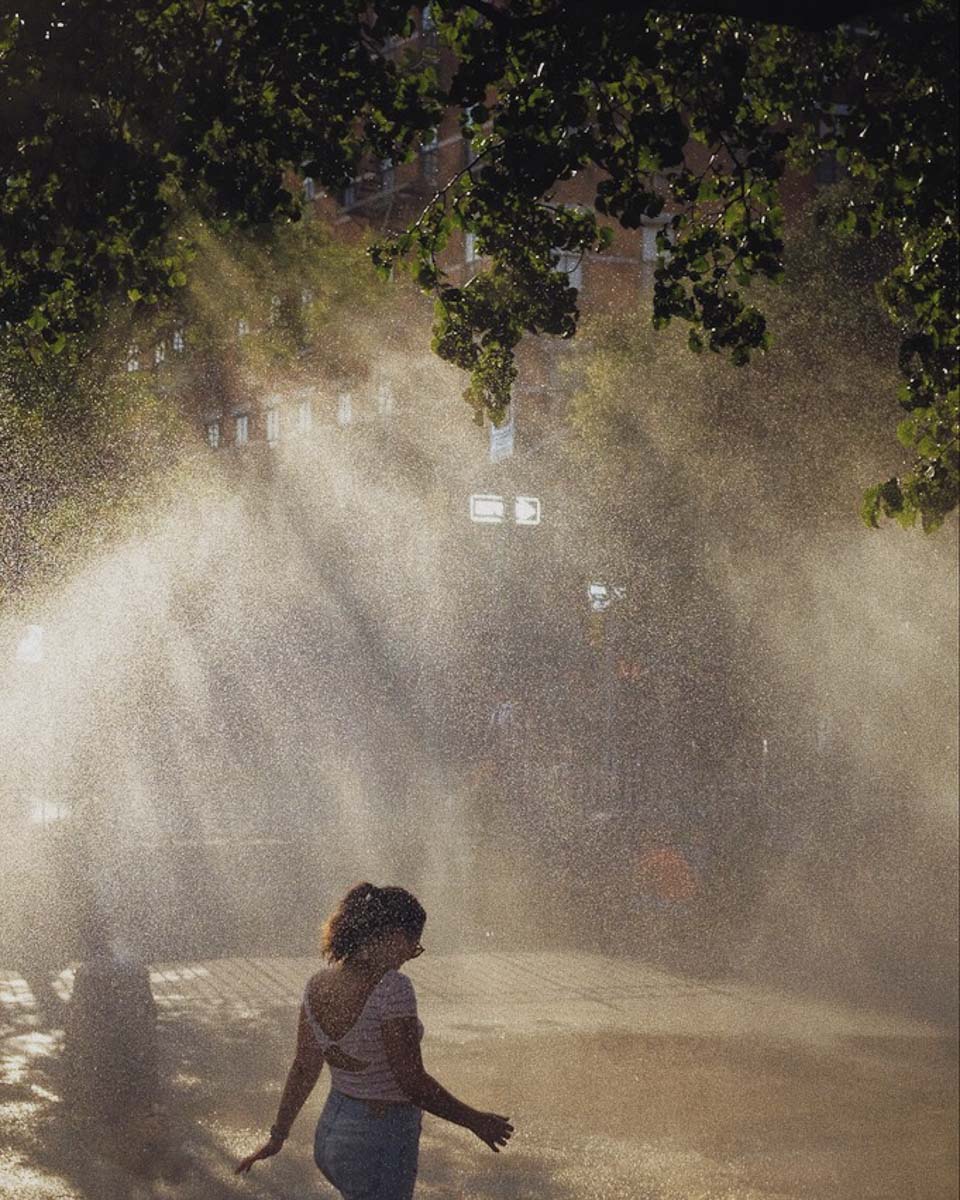Fuji X100F Review: The Disappearing Camera in 2020
The Fuji X100F needs no introduction: this is the smallest and sleekest Fuji camera on the market, and everybody is (still) talking about it. It's got the guts of an X-Pro 2 and a tack-sharp 23mm f/2 lens in a pocketable form factor. But how exactly did this little point and shoot win the hearts and minds of working professionals – and is it really that good?
UPDATE: This camera made the list on our “Best Mirrorless Camera” buying guide and “Best Fuji Camera Bodies” buying guide.
UPDATE II: This article has been updated to reflect its relevancy in 2020. Scroll down to the bottom to see if the Fuji X100F is still worth it in 2020 (spoiler alert: the answer is an emphatic “yes!”.
Peter using the Fuji X100F in Brooklyn. Canon 6D, Canon 200mm f/2.8 L.
Tech Specs
Dimensions: 127 x 75 x 52 mm (5 x 2.95 x 2.05 in)
Sensor: X-Trans III (24 MP, 6000 x 4000)
ISO: 200-12800 (expands to 100-51200)
Image format: JPG, RAW
Autofocus: Contrast Detect, Phase Detect, Multi-area, Center, Selective Single-Point, Face Detection
Manual focus: Yes
Shutter Speed: 30 sec –1/32000
Image Stabilization: No
Focal Length: 35mm
Aperture: f/2-f/16
Minimum Focus Distance: 10 cm (3.94 in)
Built-in Flash: Yes
Hot Shoe: Yes
Video Format: H.264 (1920x1080, 24p - 60p)
Storage Types: SD/SDHC/SDXC
Wireless Connectivity: Yes
Weather Sealed: No
Battery Life: ~400 frames
Fuji X100F Review
Here's what you need to know: the Fuji X100F is a wonderful camera. No if's, and's, or but's.
The full review is going to give you specificities, but I feel so strongly about this camera that I had to preface with this summary in plain text for those who might just scroll through. If you're looking for an every day carry (and your 'every day' doesn't involve much head shot portraiture or wildlife photography), the Fuji X100F is going to make you very happy.
So, lets dig in!
For context, I'm writing this review as somebody who loves difficult cameras. I regularly shoot with a Sigma DP2 Merrill, perhaps the least usable digital camera ever produced. I've gone through the bulkiest full-frame Canon DSLRs to the dinkiest plastic full-auto point-and-shoots, never prioritizing form factor in my purchasing decisions, so believe me when I admit this cold, hard truth:
The importance of form factor and portability of your every day carry are factors that cannot be underestimated.
Truthfully, I bought this camera ready to be underwhelmed. The relentless hype and praise surrounding such a straight-forward tool soured me a bit, and on paper, the price felt nothing short of ridiculous. A few begrudging clicks and a thousand dollars later, the X100F was on its way to my apartment. I can't say I was very excited about it.
But then it arrived.
Build Quality and Form Factor on the Fuji X100F
Fuji's entire lineup is stylish and ergonomic. It's kind of their thing. But something special happened in the engineering process of the Fuji X100F: imagine a paper-thin, feather-light X-Pro 2 with an itty-bitty pancake 23mm f/2 – a camera and lens combo small enough to fit in your jacket, or even pant pocket – housed in a tank-like metal body.
The end design is the closest any digital camera has gotten to a film rangefinder.
A Canon QL vs the Fuji X100F. Canon 6D, 35mm f/1.4
The body is light, but it's substantial. This really can't be stressed enough: the all-metal housing feels so expensive and durable, you won't want to put it down. When I read similar things in reviews before I bought this camera, I rolled my eyes. Now I see what they meant.
The aperture ring has two extrusions on either side of the lens to help left or right handed shooters change the aperture on the fly. The focus ring is surprisingly usable given the short length of the lens, although I spend the majority of my time with this camera on autofocus.
The joystick focus-point selector is one of those rare 'can't-go-back' features that makes you resent every other camera, so be careful – you might get too used to the convenience.
The ergonomics are great, but they aren't flawless. I don't love the SD card being nestled against the battery. It makes extended tripod or stabilizer shooting a real pain, and if you find yourself using a tripod or monopod more often than not, I would steer clear of the X100F. Also, I would certainly be in the minority to praise the 'lift to adjust' integrated ISO dial.
Some photographers feel cramped by the small size of the camera, so they opt for screw-on handles and plates that make the grip more comfortable for long periods of shooting. For me, the slim profile is the X100F's holy grail, and I couldn't imagine making it bulkier.
Burning Out the X100F Lens Motor – Don't Make This Mistake
We’re almost done with the build quality assessment, but finally – and most importantly – don't make the mistake I almost made. It's scarily easy to burn out your lens motor if you don't know about this important step.
BibleGirl in Herald Square, Manhattan. Fuji X100F
The Fuji X100F ships with an adapter that allows you to put filters on the front of your lens. This adapter seems superfluous at first glance, but it serves a vital purpose: it enables you to attach a filter without interfering with the range of motion necessary for autofocus. If you screw your filter directly on to the lens without this adapter, you'll limit the extension of your lens, and your camera will try to brute-force past it – potentially blowing out the lens motor.
If you're lucky, your screen will display 'FOCUS ERROR' and freeze your camera until you hard-reset. If you're not so lucky... it's off to the repair factory for your X100F.
So keep that adapter on hand!
Image Quality on the Fuji X100F
Can we be honest with each other, reader? Before I picked the X100F up, I really wasn't convinced by the images I saw online. I spent a lot of time poring over Fuji groups and #X100F tags on social media, but the majority of what I saw might as well have been iPhone photos.
I'm very happy to announce that I was wrong.
You'll notice comparisons to the Fuji X-Pro 2 throughout this review, and for good reason: not only is the body heavily inspired by the X-Pro 2, the guts are identical. Packing a 24 MP X-Trans III sensor renowned for its accurate color renditions – specifically around skin tones – and gorgeous, baked-in film emulations celebrated for their impactful colors, the X100F and the X-Pro 2 with a 23mm f/2 output is identical. And that is a high compliment.
The image quality speaks for itself.
Montana in Williasmburg for Brompton. Fuji X100F, f/4
But what happens when you crop down?
The files stand up to extreme pixel peeping. The below 200% crop (that's right – 200%!) was lit naturally and shot at f/2.8. The fine detail in the eyelashes and iris and lack of color contamination in the adjacent pixels is comparable to my Canon 6D's full frame sensor.
Catherine at 200% crop. Fuji X100F+TCL-X100, f/2.8
Of course, it isn't all perfect. In my wider shots, small detail like foliage sometimes render in a way I don't like. Note the grass in this photo below – it seems very busy and chaotic to me.
A grassy hill in Washington Heights, Manhattan. Fuji X100F, f/2.8
Then again, not always!
Additionally, the X-Trans III sensor has had its fair share of criticisms: notably, waxy JPGs at high ISOs (this breakdown by Jonathon Moore Lilies is a fantastic analytic think-piece to read over a cup of tea). There's also the issue of Lightroom's poor support of Fuji's raw files, though that's expected to improve by 80% in the coming months.
Fuji X100F 23mm f/2 Lens Review: Portraits, Bokeh, Sharpness, and Macro
The Fuji 23mm f/2 screwed to the front of the X100F is, as expected, phenomenal. While Fuji sensors are an acquired taste, few would deny the impressiveness of their lens design – and the 23mm f/2 is no exception.
Fuji X100F product shot. Canon 6D, Canon 35mm f/1.4
Wide open, the bokeh on the X100F has a wonderfully creamy character, and it's surprisingly easy to come by given the focal length and sensor size.
This lens is impressively sharp edge to edge as the photos throughout this review display. It has a minimum focus distance of under 4 inches, which means macro photography is fair game. Just be sure to stop down to f/4 for maximum sharpness.
Now, I'd love to say that this lens is technically perfect, but there are some engineering defects that are significant enough to mention.
The chromatic aberration (CA) on this lens when shooting wide open is extremely noticeable. The X100F failed my favorite CA 'torture test' – shooting wide open directly up at bare branches against an overcast sky – quite miserably.
Display of chromatic aberration. Fuji X100F, f/2
But don't worry – this is a worst-case scenario. Stopped down to f/2.8, the CA reduces substantially. At f/8, there isn't a hint of it. It's a one-click fix in Lightroom, but if you plan on using these jpgs SOOC, it's a factor to keep in mind.
Wide open at f/2, the lens displays significant vignetting. Additionally, close focusing tends to softens the detail and glow the highlights.
Fuji says this was an intentional result of their design, but let's be real – it's not a challenge to manufacture a lens that gets soft and vignettes at it.
The resulting effect isn't bad in portrait applications – it's quite true that the softer detail and vignetting can complement a portrait shot – but if you want pristine image quality with maximum bokeh for a macro shot, stop down to f/2.8–f/4.
So what's the takeaway? Is this lens good or bad?
Put it this way: if you need a dedicated studio camera for product photography or any sort of technical application, the X100F wouldn't be my first recommendation. While stopping down to f/4 almost completely solves the chromatic aberration, vignetting, and corner softness, it's not ideal to have a camera with so many quirks wide open if your priority is technical and accurate rendering.
But in practice, for my casual lifestyle applications, I haven't been bothered by any of these defects. Other than the soft focus wide open at macro distances, I really had to push to find technical flaws on this lens.
ISO and Low Light Performance on the Fuji X100F
Kyle at 1,600 ISO. Fuji X100F, f/2
Yet another surprise: the ISO handling on this camera is pristine up to 1600, and quite usable all the way up to 12,800!
Typically, smaller sensors have a tough time handling high ISOs without devolving in to a noisy, blotchy mess. It's a truly testament to the engineering behind Fuji's X-Trans III sensor that the ISO performance holds up so well (for a technical breakdown of the X100F's dynamic range, read this page).
Check out the below SOOC JPGs at 12,800 ISO for a torture test of the ISO handling (and note that none of the images in this post have had any noise reduction work done, which would drastically improve their appearance – instead, I think it's important to show what this camera outputs without any touch-ups).
Rita Ora at 12,800 ISO. Fuji X100F, f/2
Some reviewers get so caught up in their Fuji love that they claim higher ISOs render in a distinctly filmic way. I certainly haven't found this to be true, and I always opt for an ISO below 3200 when possible – as with any other digital camera – but Fuji's Acros-R simulation at a high ISO – even up to 25,600 – does look pretty nice.
Being a wide angle lens camera, you can drop the shutter speed down to 1/30 without incurring much hand-shake. This makes the X100F even more adept at low-light situations. Factor in the stellar ISO performance, and you've got one capable system.
Note that the autofocus can struggle in very low light if shooting at a distance further than what the focus light can illuminate. Otherwise, it's decently zippy, and functional for event work or candid snaps after dark. If your subject is too far away, manual focus works in a pinch!
Surprising Fuji X100F Features: Leaf Shutter, Built-In ND Filter, and more
Something I give Fuji extra credit for is the amount of features they packed in to the hardware and firmware of this camera. Few of these are selling points, but these features give you room to experiment and nail shots you couldn't otherwise.
Let's run down the list of some notable features.
Leaf Shutter: Balancing Flash
You can read up on the technicalities of the leaf shutter here, but here's the big takeaway: with the X100F's leaf shutter, you can use flash at a shutter speed up to 1/2000. With a regular shutter, your flash sync speed is limited to 1/250. That's a big difference!
Practically, this means you can use flash to smooth out shadows in the brightest sunlight at f/2 without your frame being totally blown out. It also has the added benefit of being whisper-quiet, complementing the X100F's natural stealth.
Electronic Shutter: Pros and Cons
When was the last time you took a photo using a DSLR? That distinctive 'ka-THUNK' can be heard from miles away. Mechanical shutters are loud, and while the X100F's leaf shutter is extremely quiet, Fuji one-upped themselves by offering an electronic shutter for truly silent captures.
The electronic shutter isn't without its drawbacks. You can't use flash with it, you're liable to get 'rolling shutter' artifacts if something moves quickly across the frame, and it renders artificial light unpredictably.
So long as you keep these three detriments in mind, it's a wonderful option for discreet street, event, or portrait photography.
Built-In ND Filter: How to Use it
If you haven't played with an ND filter before, you're in luck. Fuji designed a 3-stop ND filter built in to the X100F: a physical filter that reduces the amount of light coming in to your camera.
The longer you think about this concept, the more creative options open up – but here are some to get you started:
Shooting a shallow depth of field at f/2 in broad daylight for bright bokeh
Motion blur in broad daylight: light trails from passing cars, smoothing out water, etc.
Capture super bright images in conjunction with the super-fast electronic shutter
Digital Teleconverter: Is it Worth It?
When the 23mm focal length is simply too wide, you can try out the the digital teleconverters built in the X100F. But there's a caveat: it only works on JPGs, and you might be better off not using it at all. Here's how it works:
The EVF or LCD screen will zoom in to match the modified focal length as you compose your image.
The X100F will take a photo at the 23mm range (if you're shooting JPG+RAW, the RAW file will retain the full 24MP at 23mm) and crop your jpg in-camera using patented Fuji magic that ensures ideal quality and sharpness.
At 50mm conversion, your jpg will be cropped down to 16MP. At 70mm, you'll end up with a 12MP jpg – both of which are totally acceptable for social sharing or most printing applications.
If you're: a) shooting jpg only and hate spending time in Lightroom, or b) uploading straight to your phone from the X100F using the Fuji app and don't have time to properly optimize the crops, or c) terrible at composing for cropping in post, you might get some utility out of these options. Otherwise, just crop in post – or consider the TCL-X100 to extend your focal length.
Shooting With the Fuji X100F: Street, Lifestyle, Environmental Portraits
The X100F is indeed small and powerful, but perhaps most satisfyingly, it's fast. Start up, aim, focus, shutter in less than a second fast. This camera knows its utility is being on hand at all times to capture moments, and it acts the part.
If you haven't shot with the 23mm lens (equivalent to 35mm on a full frame) before, you'll be surprised at the versatility. Which makes sense – you can imagine the countless deliberations at Fuji HQ that resulted in the 23mm being the chosen focal length for the X100 series!
It's just wide enough for the unplanned, off-the-cuff shots that capture the 'what you see/what you're doing' of daily life without significant distortion or dead space around the edges. For comparison, the iPhone lens is just a bit wider than the 23mm, so the framing is quite similar.
Conversely, it's long enough to nail environmental portraiture, 3/4 head shots, and reliably isolate subjects in terms of framing and bokeh.
Something to keep in mind is that standing upright and taking a landscape shot is usually not the way to use this focal length. As with all wide angles, it's important to have a focal object close to the lens. Otherwise, things tend to look small and flat and boring. The name of the game with the X100F is getting up close and personal with your scene, and working every angle.
Where this focal length has really shined for me is in a replacement for the shots I would (begrudgingly) take with my iPhone: a cute dog on the street, a photo of my boots on the ground, a cup of coffee in a cafe, or the view out of my cab.
In practice, the X100F performs a very similar function to the iPhone camera – but imagine if every shot in your camera roll had the look of a 24MP X-Trans III image!
Street Photography with the Fuji X100F
If you're a street photographer, the Fuji X100F is calling your name.
With fast AF and focus point selection via the joystick, a moderately wide focal length, a quiet shutter, and an extremely discreet form factor, I've been calling this 'the camera for the anxious photographer'. It's not an exaggeration to say that you can stand 2 feet from somebody on the street and snap away without them giving you a second look.
If you need a more editorial look to your street photography as in the above, the TCL-X100 extender can you convert your 35mm equivalent lens to 50mm.
Another great street photography feature is the hybrid viewfinder. Combining the OVF with a thumbnail EVF in the lower right corner, you'll be able to see a wider field of view while keeping an eye on your focus and exposure simultaneously.
The OVF lets you see outside of your composition, meaning you can wait for the perfect moment to align inside your frame without flying blind. In practice, it's quite useful, and certainly one of the most celebrated aspects of the camera.
For my tastes, the native focal length is a bit wide for street photography, but the 24MP gives you ample opportunity to crop. This is down to preference, so consider playing with an X100F at your local B&H before making the purchase to see if you agree with the field of view.
Who is the Fuji X100F For?
This was a question I was excited to find an answer for myself. I just couldn't wrap my head around the specs: professional image quality, high price point, fixed f/2 lens... the list goes on.
For me, it turned out that the Fuji X100F was the perfect every day carry for the dedicated photographer. I don't mean that to sound pretentious, but let me put it this way: for those who are satisfied with their iPhone's output and experience, the X100F will be duplicitous and cumbersome.
But for those who hate taking photos with their phone, or for those who take special account of the light and composition in their snapshots, or for those who want to be able to print and treasure their in-the-moment photos for years to come, the Fuji X100F will enable all that – and more. And that's why this camera is so popular.
And it certainly doesn't hurt that it's a joy to use.
Midtown skyline, SOOC. Fuji X100F
Fuji X100F Price
Let's not split hairs: on paper, this camera is expensive. Flat out.
For an f/2 fixed-lens body with a APC-S sensor, you're not getting the versatility or dynamic range that you could find elsewhere for the same amount of money (you need only look to the Fuji X-T20 and any number of lenses for a similar output), and that's not to mention the optional accessories ($300+ for the teleconverter, and another $200+ for the wide lens converter!).
So why have I written such a favorable review? Well, diatribe incoming (but keep in mind – you asked for it)...
What this camera, and this camera specifically, will remind you of – while suffering no technical sacrifices or limitations to do so – is that photography is truly about the experience of taking the image. It's about showing up, being there, and having your camera with you.
In that respect, considering both the exceptional image quality and the pocketable form factor, there might be no better camera in the world than the Fuji X100F.
It's the uniquely successful marriage of form factor and image quality that makes the X100F worth it. I've never once felt held back or unable to execute my creative vision because of the technical limitations of this sensor or lens, but I have gotten shots I never would've been able to if my camera was bigger, heavier, or more obtrusive. The X100F has been by my side constantly: easy to carry, quick start up, quick focus, and boom – you've got the shot.
On review sites – and Shark & Palm is no exception –, it's easy to get lost in pixel peeping and sensor performance and chromatic aberration because these things, while important, are quantifable and easy to compare. But what these sites don't always share with you is what it really feels like to live with a camera. And the X100F feels just right.
With a few exceptions, modern cameras aren't all that different from each other as far as image output, but very few boast the image quality and portability of the X100F – and that's why, a year after its release, it's hardly dropped from it's steep price.
Where to buy the Fuji X100F
I've spent a good 3 months hunting for the best priced X100F, so I think I can say with some authority that you're not likely to spend any less than $1000 on this camera any time soon.
For me, notoriously penny pinching as I am, saving a few hundred dollars simply isn't worth the lack of warranty or reliability you get with a factory-fresh X100F. For that reason, I'd recommend going through Amazon and getting yours directly from Fuji.
Is the Fuji X100F Worth Buying?
The price is steep, but I have some good news for you. In fact, it was this consideration that convinced me to pull the trigger on an X100F of my own.
This is a camera that holds value remarkably well. As of this review, the Fuji X100F is listed between $1100 and $1200 used (compared to the $1300 factory price). The prior iteration – the Fuji X100T – is still holding strong at $790 used. If we zoom out to other Fuji mirrorless models – like the XT2 or the X-Pro 2 – we can see that their used prices has also remained within a few hundreds of their factory price, respectively.
So what's the point?
While there's no guarantee that this market value will stay consistent, the trends point to Fuji cameras, specifically the xX100 series, as being a surprisingly low-risk purchase. If, like me, you've been tired of waiting for the price to drop, it's as good a moment as ever to take the leap.
UPDATE: Is the Fuji X100F Worth Buying in 2020?
In short — yes, the X100F is well worth buying in 2020, and here’s why.
As of January 2020, the Fuji X100F is selling new for $1100. That’s a 15% decrease over two years, locking the X100F in as one of the best cameras for the money even into the new year. On the other hand, it’s also the lowest price this camera has ever been available for.
There are rumors of a successor (the FujiX100V, maybe?) at the end of 2020, but nothing has formally been announced, so now is an ideal time to pick yours up — unless you can wait until the end of the year to see if something new is announced.
Spec-wise, this camera is as powerful as it was in 2018. The autofocus is zippy, the ISO handling is above average, and it still fits cleanly in your coat pocket. It’s been my everyday carry for years, and that isn’t changing any time soon,
Rita Ora, SOOC. Fuji X100F


